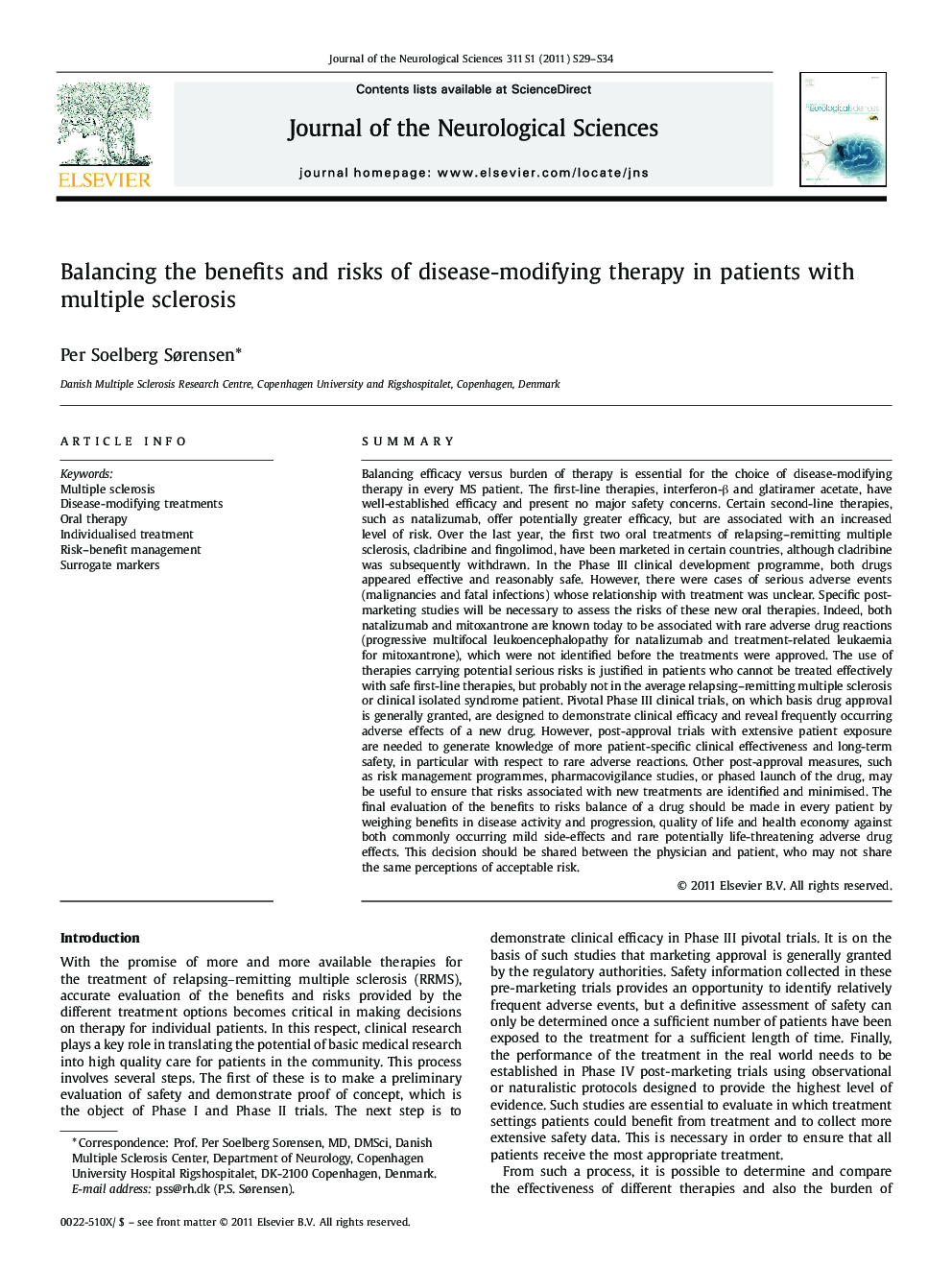| Article ID | Journal | Published Year | Pages | File Type |
|---|---|---|---|---|
| 1914130 | Journal of the Neurological Sciences | 2011 | 6 Pages |
SummaryBalancing efficacy versus burden of therapy is essential for the choice of disease-modifying therapy in every MS patient. The first-line therapies, interferon–? and glatiramer acetate, have well-established efficacy and present no major safety concerns. Certain second-line therapies, such as natalizumab, offer potentially greater efficacy, but are associated with an increased level of risk. Over the last year, the first two oral treatments of relapsing–remitting multiple sclerosis, cladribine and fingolimod, have been marketed in certain countries, although cladribine was subsequently withdrawn. In the Phase III clinical development programme, both drugs appeared effective and reasonably safe. However, there were cases of serious adverse events (malignancies and fatal infections) whose relationship with treatment was unclear. Specific postmarketing studies will be necessary to assess the risks of these new oral therapies. Indeed, both natalizumab and mitoxantrone are known today to be associated with rare adverse drug reactions (progressive multifocal leukoencephalopathy for natalizumab and treatment-related leukaemia for mitoxantrone), which were not identified before the treatments were approved. The use of therapies carrying potential serious risks is justified in patients who cannot be treated effectively with safe first-line therapies, but probably not in the average relapsing–remitting multiple sclerosis or clinical isolated syndrome patient. Pivotal Phase III clinical trials, on which basis drug approval is generally granted, are designed to demonstrate clinical efficacy and reveal frequently occurring adverse effects of a new drug. However, post-approval trials with extensive patient exposure are needed to generate knowledge of more patient-specific clinical effectiveness and long-term safety, in particular with respect to rare adverse reactions. Other post-approval measures, such as risk management programmes, pharmacovigilance studies, or phased launch of the drug, may be useful to ensure that risks associated with new treatments are identified and minimised. The final evaluation of the benefits to risks balance of a drug should be made in every patient by weighing benefits in disease activity and progression, quality of life and health economy against both commonly occurring mild side-effects and rare potentially life-threatening adverse drug effects. This decision should be shared between the physician and patient, who may not share the same perceptions of acceptable risk.
